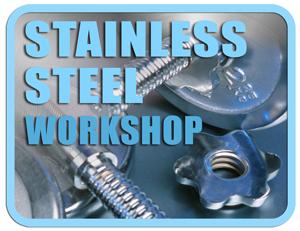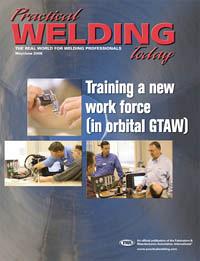- FMA
- The Fabricator
- FABTECH
- Canadian Metalworking
Categories
- Additive Manufacturing
- Aluminum Welding
- Arc Welding
- Assembly and Joining
- Automation and Robotics
- Bending and Forming
- Consumables
- Cutting and Weld Prep
- Electric Vehicles
- En Español
- Finishing
- Hydroforming
- Laser Cutting
- Laser Welding
- Machining
- Manufacturing Software
- Materials Handling
- Metals/Materials
- Oxyfuel Cutting
- Plasma Cutting
- Power Tools
- Punching and Other Holemaking
- Roll Forming
- Safety
- Sawing
- Shearing
- Shop Management
- Testing and Measuring
- Tube and Pipe Fabrication
- Tube and Pipe Production
- Waterjet Cutting
Industry Directory
Webcasts
Podcasts
FAB 40
Advertise
Subscribe
Account Login
Search
Stainless Steel Workshop: Ferritic stainless steels
- By Jeff Heagey
- March 20, 2015
- Article
- Metals/Materials
Q: What are the advantages of ferritic stainless steels?
A: When a fabrication requires corrosion resistance and high performance, your foremost concern is its affordability. One metal that can meet this demand is ferritic stainless steel. Grades include AISI type 409, 11CfCb, 430, 436, 439, and 18CrCb, just to name a few. Whichever grade you choose, ferritic stainless steel may just offer the best metallurgical option.
Ferritic stainless steels have added chromium, titanium, and niobium for a variety of functional purposes. The single greatest advantage is their corrosion resistance. In addition, ferritic stainless has an inherently higher strength level than carbon steels, which allows the use of thinner materials, thus reducing the overall weight of the component. The chromium addition (11 percent to 20 percent) provides improved scaling at elevated temperatures, between 300 degrees and 700 degrees F. Very few similar metals offer this advantage.
The applications for ferritic stainless include heat exchanger components and furnaces, as well as automotive exhaust systems and components.
Fabricating ferritic stainless steel not only has practical implications, but affords you many financial advantages. A fabricator’s choice would undoubtedly be either GMAW or MCAW. Because there is little to no nickel present in the base metal, the cost of ferritic stainless steels is not affected by the rising cost of nickel.
We will explore the weldability of ferritic in the next issue. My advice to you is to do your homework and plan well. How you weld ferritic stainless steels involves a choice—make it wisely.
About the Author
Jeff Heagey
ESAB Welding & Cutting Products
717-630-3445
About the Publication
Related Companies
subscribe now

The Welder, formerly known as Practical Welding Today, is a showcase of the real people who make the products we use and work with every day. This magazine has served the welding community in North America well for more than 20 years.
start your free subscription- Stay connected from anywhere

Easily access valuable industry resources now with full access to the digital edition of The Fabricator.

Easily access valuable industry resources now with full access to the digital edition of The Welder.

Easily access valuable industry resources now with full access to the digital edition of The Tube and Pipe Journal.
- Podcasting
- Podcast:
- The Fabricator Podcast
- Published:
- 04/16/2024
- Running Time:
- 63:29
In this episode of The Fabricator Podcast, Caleb Chamberlain, co-founder and CEO of OSH Cut, discusses his company’s...
- Industry Events
16th Annual Safety Conference
- April 30 - May 1, 2024
- Elgin,
Pipe and Tube Conference
- May 21 - 22, 2024
- Omaha, NE
World-Class Roll Forming Workshop
- June 5 - 6, 2024
- Louisville, KY
Advanced Laser Application Workshop
- June 25 - 27, 2024
- Novi, MI
































